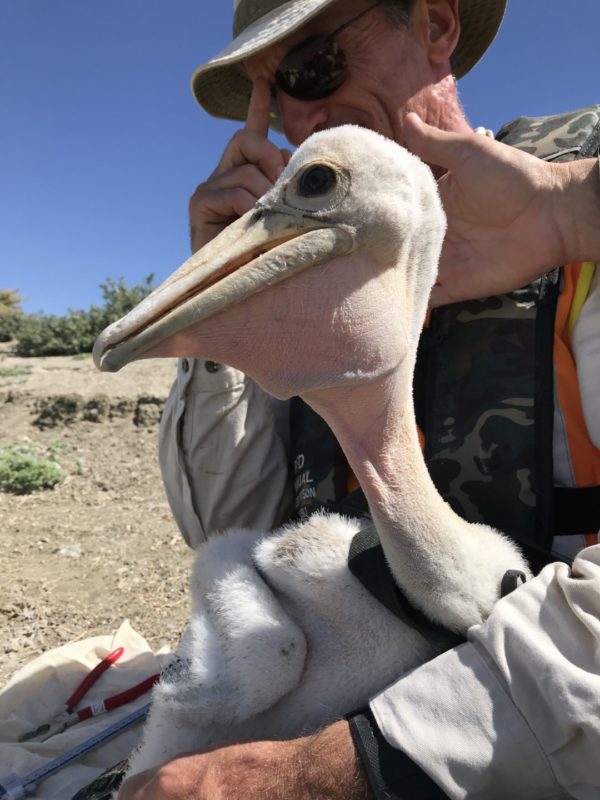When people think of Australia’s inland rivers in the Murray-Darling Basin they commonly default to carp, cod and yabbies, but there’s a lot more going on once you take a look beneath the surface.
Because Lake Cargelligo is a shallow area with a great deal of habitat diversity, it functions as a fish nursery for the Lachlan catchment, and this is particularly true of the northern section of the Lake with its creeks, backwaters and sheltered areas. These are ideal places for young fish to hatch and grow, because there is plenty of food courtesy of a combination of shallow water and sunlight, and plenty of cover within which to seek shelter from predators.
The most common native species is a small (up to 5cm) fish known as a gudgeon, which lives close to the bottom in a wide range of habitats. Its larger cousin the flathead gudgeon (up to 10cm) often shares the same habitat. Flathead gudgeon have a large head and mouth, and wait – motionless – for prey to drift within striking range.
In areas of open water – including the main channel of the river but especially the Lakes (Cargelligo, Curlew, Sheet of Water, Brewster, Cowal) – three schooling species occur in occasionally massive numbers and support the large populations of fish-eating birds (such as terns, cormorants and pelicans).
Hardyhead and Australian smelt are both small (10cm) bullet-shaped species, whereas bony bream are deeper-bodied and frequently exceed 30cm. Bony bream have tiny mouths and only feed on algae and detritus, which explains why they can’t be caught using recreational fishing gear.
The most common large predatory native species in the mid-Lachlan are Murray cod and yellowbelly (also known as golden perch). These are the big, iconic species that recreational fishers target, and along with silver perch and catfish (both of which are considered threatened species) these are also the species that have suffered the most due to a suite of factors ranging from river regulation to commercial fishing and the introduction of alien species.
Four alien fish are now extremely common throughout the Lachlan (and also in all lowland rivers of the Murray-Darling Basin). Carp are the largest and most obvious, growing to over one metre in length, but their close relatives goldfish are also common in the mid-Lachlan. Carp and goldfish were both originally introduced to Australian fresh waters in the mid-to-late 1800s, but radiated and colonised the Murray-Darling 100 years later.
Redfin perch – a schooling, predatory species also introduced in the 1860s – is also common in Lake Cargelligo and surrounding areas and no doubt has a severe impact on smaller native species.
The fourth alien species – gambusia or mosquitofish – are usually called ‘guppies’ by locals. These were introduced in the 1920s in order to combat malaria (by eating mosquito larvae). Needless to add, the experiment was unsuccessful, but the fish stayed on. Gambusia give birth to live young and are large when they reach 4cm. They have become the most widespread freshwater fish in the world, and have been implicated in the extinction or decline of many native species as they prey on eggs and juveniles and infest slow-moving, warm areas in massive numbers.
Along with the fish, the mid-Lachlan is also home to large numbers of both long and short-necked turtles, yabbies, freshwater prawns and shrimps, a healthy population of water rats and occasionally massive numbers of waterbirds.
The mid-Lachlan – like the entire lowland Murray-Darling – is ecologically compromised due to the presence of large numbers of alien species and other impacts associated with Anglo-European settlement. However, the local waterways should not be considered unhealthy. Water quality is generally good in the mid-Lachlan, and to the best of our (meaning modern scientific) knowledge, no aquatic species has actually gone extinct.
The challenge – quite obviously – is to keep the Lachlan in at least the condition it is now and aim to improve a range of measurable factors into the future.
Dr Adam Kerezsy is a fish ecologist based in Lake Cargelligo in central-western New South Wales, and is the author of international journal papers, book chapters and the natural history book Desert Fishing Lessons: Adventures in Australia’s Rivers. Adam is an adjunct research fellow at both Charles Sturt University (NSW) and Griffith University (Qld).



